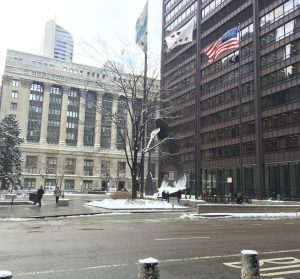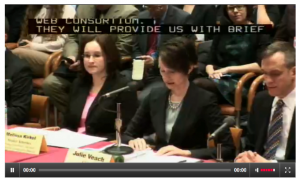by Alan Livshin
August 14, 2008 – To live the American dream is hard enough for an American, but its even harder for Asian-Americans having to live up to American and Asian standards, especially cultural stereotypes.
Social pressures, caused by misleading representation in the media and classic stereotypes, are placed on the Asian community to perform at higher standards than their American counterparts, says Peter Porr, executive director of the Southeast Asian Center in Uptown.
“It’s a concept called the Asian model minority and it troubles both the young and old, the first generation and the next generation,” he said.
In popular culture, Asian characters are often portrayed as shy, hard-working and smart, but this can work to their advantage or against it, explained Poor.
When a refugee family from Vietnam immigrates to America, for example, the change can be dramatic. To further complicate the situation, their children are expected to be smart and get excellent grades, expectations that can damage the child and the family, he explained.
Porr’s organization provides social services, such as citizenship assistance, job placement and English courses to Chicagoland’s 450,000 Asian-Americans, but they do it in a unique fashion.
“We don’t promote the old or new philosophy,” he said. “Instead we try to teach a deep understanding of the old and new culture.”
This system provides a bridge between the generations filling a gap that separates the community and distracts them from more pertinent issues.
“There is a generational divide between the first generation, generation 1.5 and the second generation,” said Lynda Trihn Vo, professor and chair of the Department of Asian American Studies, University of California at Irvine.
“For example the issue of communism divides many in our community, rather than fighting for education and getting better health care or insurance, the basic necessities,” she added.
Vo and her family were one of the hundreds of thousands of Vietnamese refugees who came in waves in the mid 70’s after the Vietnam War. Although it was a tough journey, her upbringing led her to become an active community leader and educator.
“When I was going to high school, there were not political leaders among people of Vietnamese origin, but now there is a community of vibrant young people who aim to change that,” she said.
The challenge, she explained, is to gather community leaders who understand the issues of the individuals and not to categorize any problems on the Asian community as a whole.
The University of Illinois at Chicago is home to a large, active Asian-American student body working toward the common goals of the community. Sandy Tuong Mac, 20, is one of those people making those needed changes.
“At the Vietnamese Association of Illinois there was a battle between the old and the young,” she said.
” The young broke up into two groups and then they broke into two more groups,” explained Mac, who is the president of the Vietnamese Student Association.
As a student leader, she meets with the students and the adults to build a relationship that is based on common goals instead of the current divide between generations. Her contributions have not gone unnoticed.
“The alumni are really proud of us for reviving it, and now they have become sponsors,” Mac said.
She was only a baby when her family immigrated in 1991, but her brother, now 14, was born in America, and she says he has a harder time because of the heavy inner city influences.
“It seems like youth are growing up so quick, and they are getting in a lot of trouble getting arrested,” she said. “But they still respect their elders and parents.”
Even though she is a competent student, studying pre-med, and an active student leader, she was not immune from stereotyping and the model minority.
“I really hate it because I’m one of those Asians who sucks at math and science,” said Mac, who had to take a remedial math course at the beginning of her collegiate career. “One day this Caucasian girl came up to me and said, ‘Shouldn’t you be in calculus 3?’ Then she asked , ‘Do you want to study?,’ because she thought I was smart.”
Her initial reaction was not one of shock and awe, because she was used to the misnomer that all Asians are smart. Instead she brushed it off and said “No, I’m just as dumb as you are!”
A 2002 U.S. Department of Education study — one of the rare national reports examining Asians by ethnicity — found that Southeast Asians have reading and math scores comparable with Latino and African-American students.
The majority of Asian-Americans students do fare better in test scores, but the numbers are skewed for those in smaller Asian minority groups, and those children get lost in the gaps of studies due to inadequate categorization and data.
California, home to about one-third of the country’s Asian population, is one of the few states where the public school system separates Asian students’ test scores by ethnicity. For all 8th grade Asians , 64 percent are passing in English, a rate higher than whites across the state. Cambodians and Laotians, however, are passing at a 30 percent rate.
Here in Chicago, Asian students only represent 3 percent of the Chicago Public School system and thus it is both more difficult and a lower priority to cater to their individual needs.
“The Southeast Asian community is small and the languages are very different as opposed to the Latino community which is massive and has a lot of clout,” said Porr.
It’s an uphill battle, he explained, but great improvements are possible.
“In the end our goal is the same; to help out the community,” Mac said.

![Reblog this post [with Zemanta]](http://img.zemanta.com/reblog_e.png?x-id=0ffb01ad-734f-4d36-95fe-2fcc7380ddd4)










Be First to Comment